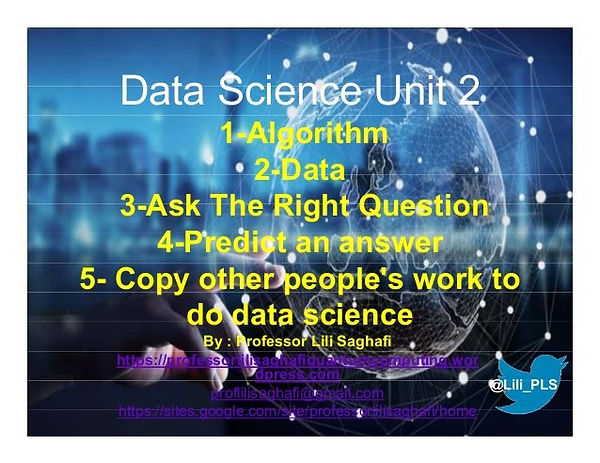
Data Science
In this Data Science course ( Graduate Program ) I will focus on understanding business intelligence systems and helping future managers use and understand analytics, Business Intelligence emphasizing the applications and implementations behind the concepts. a solid foundation of BI that is reinforced with hands-on practice.
The course is also designed as an introduction to programming and statistics for students from many different majors.
It teaches practical techniques that apply across many disciplines and also serves as the technical foundation for more advanced courses in data science, statistics, and computer science.
Most often we’re not sure how to use data to find answers to the questions that will make us more successful in what we do. In this course, you will discover what data is and think about what questions you have that can be answered by the data – even if you’ve never thought about data before. Based on existing data, you will learn to develop a research question, describe the variables and their relationships, calculate basic statistics, and present your results clearly. By the end of the course, you will be able to use powerful data analysis tools – either SAS or Python – to manage and visualize your data, including how to deal with missing data, variable groups, and graphs.
Some of the Topics:
•Selecting a research question
–Writing your first program - SAS or Python
•Managing Data
–Working with Data sets
•Visualizing Data
Analyzing Big Data
•Start with clear business objectives. ...
•Evaluate data quality. ...
•Answer specific business questions. ...
•Be objective as possible. ...
•Add ample context. ...
•Visualize your data. ...
•Use technology to sift and organize data. ...
•Hire and develop sharp analytical minds.
USING DATA BOOKS
AVAILABLE CODE BOOKS AND DATASETS
Below are codebooks (as pdf files) and data sets (as .csv files) for each of the five data sets that you can use in this course. Alternately, you are welcome to use a data set of your own.
1-The U.S. National Epidemiological Survey on Alcohol and Related Conditions (NESARC) is a survey designed to determine the magnitude of alcohol use and psychiatric disorders in the U.S. population. It is a representative sample of the non-institutionalized population 18 years and older.
NESARC codebook (,pdf)
2. The Mars Craters Study presents a global database that includes over 300,000 Mars craters 1 km or larger that were created between 4.2 and 3.8 billion years ago during a period of heavy bombardment (i.e. impacts of asteroids, proto-planets, and comets).
3. The National Longitudinal Study of Adolescent Health (AddHealth) is a representative school-based survey of adolescents in grades 7-12 in the United States. The Wave 1 survey focuses on factors that may influence adolescents’ health and risk behaviors, including personal traits, families, friendships, romantic relationships, peer groups, schools, neighborhoods, and communities. Check out the AddHealth Code Book Index to see a list of the topics addressed in each codebook section.
Addhealth Wave 1 codebook (zip file)
4. This portion of the GapMinder data includes one year of numerous country-level indicators of health, wealth and development.
http://www.gapminder.org for more information







.png)





